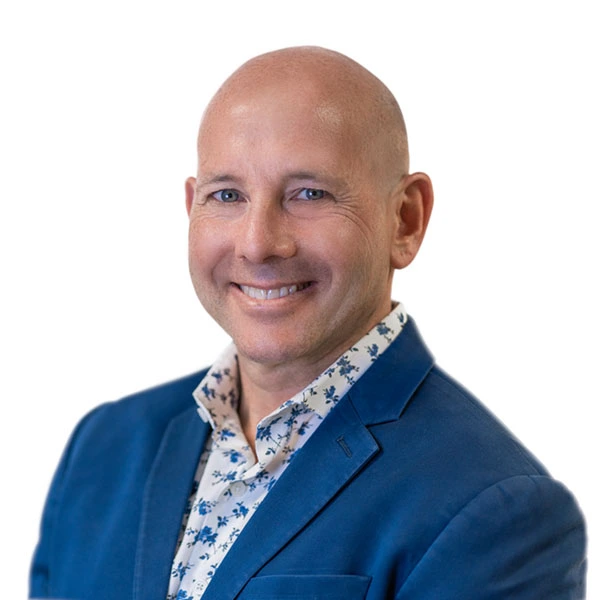An accurate diagnosis is the foundation of adequate medical treatment and patient care. It forms the beginning for appropriate management plans, medication prescribing, therapy recommendations and early intervention for specific conditions.
Healthcare professionals have achieved significant progress in diagnosis criteria, particularly to better understand and manage patients with psychiatric disorders/physical illnesses combined with substance abuse, which is known as a “dual diagnosis.” Since patients with this diagnosis have double the risk of a relapse, this treatment approach can make a huge difference in the overall outcome.
Continue reading to learn about the signs, causes, and integrated treatment approaches that can improve the outcomes and quality of life for those with dual diagnoses.
Table Of Contents
What is a Dual Diagnosis?
“Dual diagnoses” can be defined as the simultaneous occurrence of two mental disorders, one being a substance use disorder (SUD) and the other not. This term is not to be confused with co-occurring disorders, as this diagnosis refers to all the mental and physical illnesses resulting from substance abuse.
The concurrent presence of these two disorders implies an interaction that affects the course and prognosis of both conditions. This diagnosis is more common than we believe, as recent studies point out that up to 75% of people with severe mental illnesses such as schizophrenia and bipolar disorder have a dual diagnosis.
While the last edition of the Diagnostic and Statistical Manual of Mental Disorders (DSM-5-TR) includes a criterion for dual diagnoses, it doesn’t define specific combinations.
Signs and Symptoms of Dual Diagnoses
The signs and symptoms of dual diagnoses may differ based on the specific mental disorder and the type of substance being abused. Healthcare professionals should run primary care diagnostics to define patient’s particular symptoms.
Yet, there are common signs and symptoms that we can list:
- Mood swings
- Substance cravings
- Sleep disorders
- Social isolation
- Poor attention
- Impulsivity
- Anxiety
- Depression
- Hallucinations
- Suicidal thoughts
Causes of Dual Diagnosis
Dual diagnoses are multifactorial and usually involve genetic, environmental, and psychological interactions.
Expecting them to be caused by one specific source can result in misdiagnosis, inadequate management and unfavorable outcomes. Healthcare professionals must consider the following causes to provide effective care:
Genetic Predisposition
To date, it is estimated that 40–60% of people’s vulnerability to substance use disorders comes from genetics.
Research has shown that rare genetic variations or combinations of genes can increase susceptibility to major psychiatric disorders and substance abuse. This group of gene variations can be present in families with a history of mental illness or substance use disorders and are more likely to pass them.
Environmental and Developmental Factors
Children who experience Adverse Childhood Experiences (ACEs) are more prone to suffer from chronic health problems, mental illness, and substance abuse in adulthood.
Sadly, data shows that in the U.S. alone, 64% of adults reported having experienced at least one type of ACE before age 18, explaining the high rates of dual diagnoses in the country. As well, chronic stress, poor work-life balance, and peer pressure can contribute to a dual diagnosis.
Neurochemical Imbalances
Neurobiology research has an interesting insight into neurochemical imbalances and dual diagnoses, stating that addiction and mental illnesses share a neural substrate.
For example, schizophrenia causes dysregulation of neurotransmitters, especially dopamine, leading to the inability to feel pleasure, known as anhedonia. This symptom may push individuals to seek pleasure through drug use as a coping mechanism.
This scenario is likely to happen with other mental health disorders such as anxiety, bipolar disorder, depression, disruptive behavior, and borderline personality disorder.
Health Impact of Dual Diagnoses
Individuals with dual diagnoses often experience more severe symptoms, poorer treatment outcomes and more healthcare resources compared to those with a single disorder.
Among the health impacts of dual diagnosis, we can mention:
- Liver disease, cardiovascular problems and infectious diseases, neglect of physical health needs.
- Worsened symptoms of depression and anxiety.
- Higher risk of self-harm and suicide due to hopelessness, despair and isolation.
- Difficulties in engaging individuals in care and treatment coordination.
- Medication non-adherence, relapse and difficulty maintaining sobriety or psychiatric stability.
- Promiscuity, prostitution and robbery.
- Increased risk of incarceration, involvement in criminal activities or erratic behavior.
- Adverse impacts on physical and mental health, social relationships, employment and financial security.
Common Dual Diagnosis Combinations
Even though the DSM-5-TR doesn’t list specific dual diagnosis combinations, the medical experience can point out the most common associations, such as:
- Depression and Alcohol Use Disorder
- Anxiety Disorder and Cocaine Addiction
- Bipolar Disorder and Opioid Dependence
- Schizophrenia and Cannabis Use Disorder
- Post-Traumatic Stress Disorder (PTSD) and Methamphetamine Addiction
- Attention-Deficit/Hyperactivity Disorder (ADHD) and Nicotine Dependence
- Borderline Personality Disorder and Benzodiazepine Abuse
- Obsessive-Compulsive Disorder (OCD) and Hallucinogen Use Disorder
- Eating Disorders (e.g., Bulimia) and Stimulant Abuse
- Panic Disorder and Prescription Drug Misuse (e.g., opioids or sedatives)
Dual Diagnosis Treatment
Since dual diagnoses are very common, healthcare professionals should consider them the norm rather than the exception. The medical practice must be ready to approach the scenario with an open mind and with a multidisciplinary team.
Neither mental health disorders nor substance abuse can be fitted into one box. A patient could have a severe mental illness along with a partial addiction that can go unnoticed or chronic substance abuse with an undiagnosed mild mental health disorder.
Approaches commonly used in dual diagnoses treatment are:
- Integrated treatment to simultaneously address substance use and mental health disorders.
- Medication management to alleviate symptoms and assist in substance withdrawal or maintenance.
- Psychotherapy addresses underlying issues, develops coping skills and promotes behavior change.
- Cognitive-Behavioral Therapy (CBT) to identify and modify maladaptive thoughts and emotions.
- Pharmacotherapy to manage cravings, prevent relapse and stabilize mood.
- Psychiatric rehabilitation to improve functional skills and enhance social support networks.
- Relapse prevention planning to identify triggers and prevent relapse in both disorders.
Dual Diagnosis − Prognosis and Final Considerations
An improved diagnostic criterion is a compass for addiction professionals better to address both substance use and mental health disorders.
Dually diagnosed patients achieve the best results following an integrated model addressing both disorders simultaneously. As patients with dual diagnoses have a higher risk of relapse and poorer medication adherence, prognosis is reserved for each case specific.
Early intervention and education initiatives can bridge the gap, promoting mental health awareness and preventing substance abuse for healthy, functional adults. If you or someone you know is showing signs of dual diagnosis, seek a professional as soon as possible.
People Also Ask
What is the best way to treat dual diagnosis?
The best way to treat dual diagnoses is to approach both diagnoses with an integrated approach, addressing substance use disorder and mental health conditions simultaneously for optimal outcomes.
What are the potential impacts of dual diagnosis?
Dual diagnosis can increase the risk of relapse, worsening mental health symptoms, higher risk of self-harm, challenges in daily functioning, social isolation, physical health complications, financial and legal issues, strained relationships, and reduced quality of life.
What are the symptoms of dual diagnosis?
Symptoms of dual diagnosis include mood swings, substance cravings, changes in sleep patterns, social withdrawal, difficulty concentrating, impulsive behavior, anxiety or depression, hallucinations and thoughts of self-harm or suicide.
Page Sources
- Domino, K. B., Hornbein, T. F., Polissar, N. L., Renner, G., Johnson, J., Alberti, S., & Hankes, L. (2005). Risk factors for relapse in health care professionals with substance use disorders. JAMA (Chicago, Ill.), 293(12), 1453. https://doi.org/10.1001/jama.293.12.1453
- Larsen, J. L., Johansen, K. S., & Mehlsen, M. Y. (2022). What kind of science for dual diagnosis? A pragmatic examination of the enactive approach to psychiatry. Frontiers in Psychology, 13. https://doi.org/10.3389/fpsyg.2022.825701
- Temmingh, H. S., Williams, T., Siegfried, N., & Stein, D. J. (2018). Risperidone versus other antipsychotics for people with severe mental illness and co‐occurring substance misuse. The Cochrane Database of Systematic Reviews, 2018(1). https://doi.org/10.1002/14651858.CD011057.pub2
- DSM. (n.d.). https://www.psychiatry.org/psychiatrists/practice/dsm
- Why is there comorbidity between substance use disorders and mental illnesses? | National Institute on Drug Abuse. (2021, April 13). National Institute on Drug Abuse. https://nida.nih.gov/publications/research-reports/common-comorbidities-substance-use-disorders/why-there-comorbidity-between-substance-use-disorders-mental-illnesses
- Andreassen, O. A., Hindley, F. L., Frei, O., & Smeland, O. B. (2023). New insights from the last decade of research in psychiatric genetics: Discoveries, challenges and clinical implications. World Psychiatry, 22(1), 4-24. https://doi.org/10.1002/wps.21034
- Fast Facts: Preventing Adverse Childhood Experiences |Violence Prevention|Injury Center|CDC. (n.d.). https://www.cdc.gov/violenceprevention/aces/fastfact.html
- Prevalence and consequences of the dual diagnosis of substance abuse and severe mental illness. (2006). PubMed. https://pubmed.ncbi.nlm.nih.gov/16961418/
- Woody, G. (1996). The Challenge of Dual Diagnosis. Alcohol Health and Research World, 20(2), 76-80. https://www.ncbi.nlm.nih.gov/pmc/articles/PMC6876494/

 Authored by
Authored by  Reviewed by
Reviewed by 
